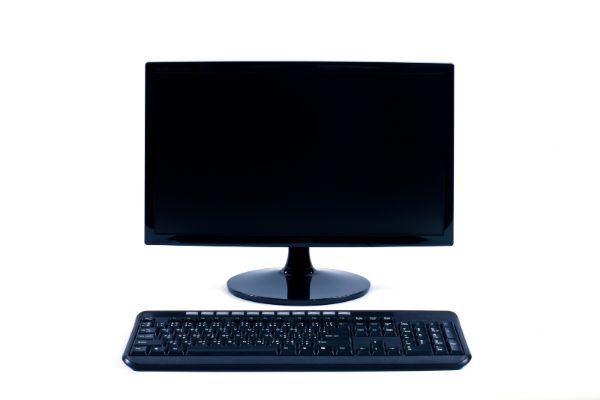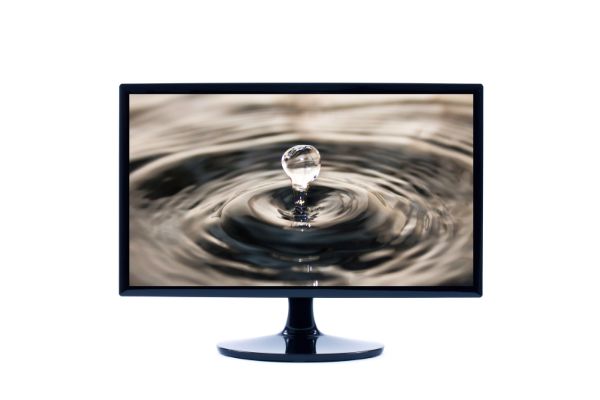Disclaimer: This post may contain affiliate links, meaning we get a small commission if you make a purchase through our links, at no cost to you. For more information, please visit our Disclaimer Page.
Monitor display specifications include its refresh rate and the different resolution sizes it can support. You can check your monitor display specifications with any simple software program or from the control panel.
Table of Contents
Where Are the Display Settings for Your Monitors Located?
Your monitor’s display settings can be located in the control panel.
To open your display settings, click on your monitor’s start button and click on the control panel. Next, locate and click on “System”.
You can also select the appearance of any extra display when you connect to another monitor.
There’s a “new display detected” dialog box you can use to select your preferred desktop appearance on the display page. Your focus should be on how your desktop will appear on the monitor’s display. You can also choose to “duplicate” or “mirror” your desktop’s appearance on all displays. (Reword)
Default display settings work great and are suitable if you intend to use your mobile PC for a presentation with a projector (reword). It’s also useful for fixed displays like a TV-type monitor or a wall-mounted plasma display in a conference hall.
If you’re looking to increase your desktop’s surface, you can get that done by dragging the overall desktop displays. This will enable you to alternate between different program windows across the different displays.
To cite an instance, you can jot down notes on your mobile laptop using Ms Office OneNote. It’ll come in handy during a presentation to clients on an external display that’s clear enough for everyone to see.
There’s another option to show your mobile PC desktop onto the external screen alone. This alternative is efficient when you play a DVD on your mobile PC. You’ll find it useful, especially if your PC supports full-screen videotape playback on one display.
As an extra benefit, you could save the battery’s power by switching off your monitor’s display and running just the external display. You can also save battery power by turning off the mobile PC display and using only the external display.
How Do I Check My Monitor Display?
Locating your monitor display specifications will enable you to choose the most suitable resolution you can apply for the display. Monitor specifications include its refresh rate and the different resolution sizes your monitor can support. You can also check your monitor display specifications with any simple software program or from the control panel.
Follow the simple steps below to view your display properties:
- Click on the “start” menu on your monitor and click on the “control panel” icon.
- Move your mouse pointer to the “display” icon and double click on it.
- You’ll see a “settings” tab in the menu; click on it.
- Move the scrollbar on the screen resolution page to check out the different available resolutions for your monitor.
- You should spot the “advanced” button. Click on it and click on the “Monitor” menu.
- Below the “monitor settings” tab, you’ll find your screen’s refresh rate “drop-down” box. Click on that tab to view the refresh rates available for your monitor.
How Do You Check If a Monitor Is Working?
A faulty monitor can affect your productivity and cause delays that could be detrimental. They sometimes require professional servicing in severe cases, but how would you know if it’s a serious case unless you troubleshoot?
Here are essential tips and steps to help you check whether or not your monitor isn’t working and if it requires an expert’s attention.
- Ensure that all the power buttons are on. This is important, especially for monitors with more than one ON button.
- Check for any unplugged monitor power cable joining. Sometimes there’s no problem with your monitor other than an unplugged or disconnected power cable.
- Other times, maybe a cable adapter isn’t properly connected. For example, the small cable connecting a VGA cable to a DVI or HDMI port, or vice versa.
- Any slight disconnection from the power cable adapters could be the reason your monitor isn’t working.
Also, check for possible disconnections in your monitor data cable jointures. Sometimes the issue isn’t that your monitor can’t come on but that it can’t access any information.
One major cause of such issues is that the cable which links data to your monitor is loose or disconnected.
A loose data cable could also be why the power light on your monitor is on but showing amber and not green. Also, most common monitor issues generate from cable disconnections, which is why you’re advised to check all possible connections.
If you observe spotted white dots on your monitor’s screen, then it might be an indication of bad pixels. Unfortunately, one component that also fails alongside a deteriorating monitor is the pixels. They’ll appear in the form of small white dots and will reduce the overall state of your monitor’s screen.
- Increase your monitor’s contrast and brightness to the highest. If your screen is dim, your monitor might be displaying information only that you can’t see.
Most current monitor models have one on-screen interface for any setting, with contrast and brightness inclusive. Unfortunately, you’ll most likely be unable to access this interface if your monitor is completely bad.
Should you perform a dual or multiple monitor set-up, ensure you do a proper set-up for all of them. This might look like a general setting, but things could be a bit different with two or more monitors. There’s a chance that the extended displays are functioning well, but the operating system isn’t correctly linked to them.
A few reasons this may occur include a wrong set-up procedure or a corrupt/missing video card driver. For instance, there’s no extra screen set-up when a projector is plugged to a computer.
Another example is when a projector is programmed as a major display. Such configuration could make the onboard screen stay blank.
It may relieve you to know that a bad monitor doesn’t necessarily imply that there’s anything else wrong with your system. The possibilities are high that the data contained hasn’t been tampered with. You should be able to retrieve all your important information once your monitor is fixed.
If there’s an urgent need to access information, you could connect to another monitor to confirm that there’s only one affected monitor. Recognizing signs of a bad monitor is essential to prevent unwarranted repairs or replacements.
New installations like a new video card driver or an update can also affect your monitor. Try recalling if your monitor generates issues after a new update or installation. Such issues are a pointer that the problem with your monitor could be software related.
For people using a picture tube monitor, a flickering screen usually signals the presence of a faulty part. However, a defective component could also make your monitor display to cut on and off.
How Do You Determine Your Screen Resolution?
Most current monitor models render their pixel size to the OS. Therefore, when you attempt to change your monitor’s output resolution, it recommends the default resolution. This is the resolution stated by your monitor.
To calculate the resolution in pixels per inch, for example, you’ll divide the pixel by the physical size of your screen.
If you want to change your display screen’s resolution, click on the “drop-down” menu next to the “display resolution”.
Type in “calibrate display color” on the settings search bar to adjust or change the colour calibration. Then, all you need to do is follow the simple displayed directions step by step.
Note: It would help if you use your monitor’s native resolution. Any alteration in the recommended resolution could make the content on your screen look blurry.


